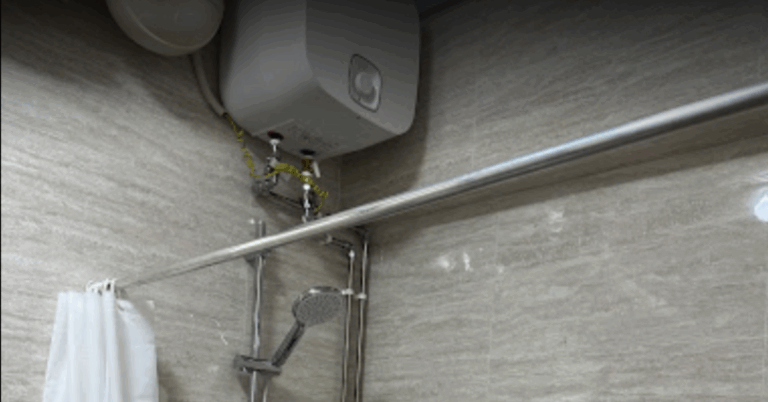Elevating Wine Culture: The Rise of the Wine Cellar in Singapore
From humid tropical nights to the steady hum of urban life, Singapore isn’t the first place one would think of when imagining underground wine vaults. Yet today, the concept of the Wine Cellar Singapore is becoming a sophisticated statement of taste, refinement, and long-term wine care. More than mere storage, a well-designed wine cellar blends art and science — creating an ideal microclimate for aging, offering aesthetic delight, and signaling to guests that wine is not just a drink, but a passion.
The Appeal of a Wine Cellar in Singapore’s Climate
Singapore’s climate presents unique challenges for storing wine. Ambient temperatures often hover around 30 °C with high humidity. These conditions are harsh for maintaining the delicate equilibrium that wine demands. A cellar—whether a dedicated room or a high-end wine cooler acting as a “mini-cellar”—helps buffer against temperature swings, UV damage, vibration, and cork desiccation.
Collecting wine is not just about acquisition; it’s about preservation. Without proper conditions, even exceptional vintages can degrade. That’s why a purpose-built wine cellar in Singapore offers far more than storage—it offers peace of mind and potential value retention. Whether you are an occasional enthusiast or a serious collector, the step from a wine refrigerator to a custom cellar is a natural progression in ensuring your bottles age gracefully.
Key Components of a Successful Wine Cellar
When designing or selecting a wine cellar in Singapore, several critical elements must align. Below are the foundational considerations:
1. Temperature Control (and Stability)
Red wines often prefer 12–18 °C, while white wines may need 8–14 °C. A good cellar offers tight tolerances (±1–2 °C) with minimal fluctuation. Dual-zone cellars or segmented storage areas are ideal if you store both red and white wines.
2. Humidity Management
Humidity between 50% and 70% helps keep corks moist, preventing oxidation. Too low, and corks dry out; too high, and mold or label damage sets in. Your cellar must include humidity regulation to maintain this balance.
3. Protection from Light and UV
Wine is sensitive to UV radiation, which can prematurely age wine or degrade flavor compounds. Dark interiors, tinted glass doors, or filtered lighting protect bottles from harmful exposure.
4. Vibration Damping
Mechanical vibrations—from compressors, water pipes, or neighboring machinery—can disturb sediment in wine and interrupt aging. Proper insulation, isolation mounts, or even passive cooling techniques help mitigate vibration.
5. Air Circulation and Ventilation
Good wine cellars promote gentle airflow, reducing stagnant air pockets which can encourage odors or mold. Ventilation helps keep temperature uniform across racks.
6. Storage Design and Capacity
Every wine collection is different: some bottles are tall (e.g. magnums), others are international shapes. Adjustable shelving, rack rails, and flexible layouts allow you to adapt the cellar as your collection grows.
7. Aesthetic Integration
A wine cellar is also a design feature. The right materials—wood, stainless steel, glass—reflect your style. Ambient lighting, architectural integration, and visibility (glass doors, viewing windows) can turn a cellar into a centerpiece rather than a utility closet.
Wine Cellar Formats: From Hobbyist to Collector
In Singapore, wine cellar solutions range from compact wine coolers to fully built-in subterranean rooms. Below is a spectrum of approaches:
Built-in Cellars / Wine Rooms
These are custom rooms carved into basements, service spaces, or partitioned areas in the home. They can be fully climate-controlled, enclosed with insulated walls, and visually stunning — glass walls, dramatic lighting, and curated layouts.
Integrated Cabinet Cellars
For many homes lacking spare rooms, a built-in cabinet-style installation (e.g. under stairs, behind panels) offers an elegant middle ground. These cellars may resemble furniture pieces but deliver advanced cooling, humidity controls, and aesthetic polish.
Free-Standing Wine Cellars / Coolers
Perfect for flexibly located wine storage, floor-standing units can double as wine cellars in smaller scale. They’re portable, simpler to install, and ideal for those just starting out. The trade-off is generally lower capacity compared to fully custom rooms.
Hybrid Setups
Some collectors adopt a tiered approach: a high-capacity “core” cellar for aging, supplemented by smaller free-standing or cabinet units for everyday wines. This flexibility balances longtime investment with wine-access convenience.
Designing Your Wine Cellar in Singapore: Step by Step
Here is a suggested process to bring your wine cellar vision to life:
1. Assess Your Collection and Growth
Begin by inventorying your current wines. Estimate future growth over 5–10 years. This determines capacity needs and shelving design.
2. Choose Location Strategically
Pick a spot with little thermal variation and low exposure to sunlight or external heat sources. Avoid walls adjacent to kitchens, air conditioning units or external walls facing midday sun.
3. Define Environmental Targets
Decide your target temperature(s) and humidity range. Specify tolerances, zones (if needed), and safety margins. These targets guide cooling, insulation, and ventilation design.
4. Plan Insulation and Envelope
Use quality insulation (e.g. high R-value panels), vapor barriers, and good door seals. A weak envelope undermines even the best cooling system.
5. Select Wine Cooling System
Choose between compressor-based, thermoelectric, or even passive cooling systems. Ensure redundancy or backup if the climate is critical. Pay attention to noise, power draw, and reliability.
6. Design Racking, Shelving & Layout
Pick materials (wood, metal, composite) that resist humidity. Decide on fixed vs adjustable racks. Incorporate vertical clearance for larger bottles and horizontal flexibility for mixed formats.
7. Control Systems & Monitoring
Sophisticated cellars include digital thermostats, humidity sensors, alarms, data logging, and remote monitoring. Some systems integrate with smart home platforms.
8. Lighting & Presentation
Use dim, indirect lighting or LED strips (low heat) to highlight rather than damage. Glass walls or display racks enhance the visual appeal without compromising the environment.
9. Implementation & Commissioning
Once installed, the cellar should run empty for days to validate stability. Use dummy bottles or test runs before introducing your investment collection. Monitor over a few weeks and make adjustments.
Wine Cellar Singapore: Beyond Storage to Lifestyle Statement
Building a wine cellar in Singapore is not simply a technical undertaking; it affirms wine as part of your home’s identity. It communicates that wine deserves careful attention, that aging is an art, and that your home is your gallery. Guests will encounter more than bottles—they will see curated architecture and thoughtfulness.
Especially in a dense, high-end real estate market like Singapore’s, valuable square meters are at a premium. A luxurious wine cellar adds functional square footage and even resale appeal. It becomes a differentiator: a prospective buyer sees not just a storage room, but the potential to carry forward a legacy collection.
Moreover, a wine cellar encourages discipline and respect in collecting. Rather than buying impulsively thinking “I’ll drink it soon,” collectors plan, place, and pace themselves. Wine becomes an experience to unlock, not just consume.
Common Challenges and How to Overcome Them
High Ambient Heat and Humidity
Because Singapore’s climate is taxing, cooling systems must be powerful and efficient. Oversizing the compressor slightly, using stronger insulation, and ensuring a reliable power supply mitigate risks.
Power Reliability & Backup
Electrical dips or outages could jeopardize your cellar. Consider backup power supplies, battery-based UPS systems, or auxiliary cooling units.
Space Constraints
Many homes in Singapore lack spare rooms. Creative use of under-stair spaces, service yards, or vertical wine towers can solve for space limitations.
Condensation & Moisture
If humidity control is mishandled, condensation can ruin labels or infrastructure. Proper vapor barriers, drainage planning, and controlled ventilation address this.
Vibration from Equipment
Poor placement of cooling units, pumps, or compressors near racks can create vibration. Isolation mounts, remote placement, or quieter compressor tech help.
Maintenance & Service
A cellar is not “set and forget.” Filters, seals, sensors, and cooling systems need occasional service. A partnership with a maintenance provider or backup parts ensures longevity.
Tips for Collectors Making the Leap
Start small, scale smartly. Many collectors begin with a premium wine cooler and “graduate” to a built cellar when their collection justifies it.
Collect for aging, not storing. Choose wines that improve over time. Don’t just stash every new release.
Document every bottle. Use inventory software or logs that track vintage, purchase price, location, tasting notes, and aging windows.
Rotate intelligently. Keep bottles you frequently consume in easily accessible zones; reserve prime aged wines deeper in the cellar.
Use the cellar as a showcase. Host tastings, themed dinners or dinners in the cellar space. Wine becomes part of living, not hiding.
Future Trends: What’s Next for Wine Cellars in Singapore
As technology advances and wine culture matures locally, several trends are emerging:
Smart Cellars & IoT Integration — real-time alerts, humidity/temperature trending, power-outage analytics, smartphone control.
Modular & Retrofit Cellars — kits that convert existing rooms or closets into viable cellars without heavy renovation.
Energy-Efficient Cooling — greener refrigerants, heat recovery systems, and passive cooling design for tropical climates.
Aesthetic Fusion — wine cellars doubling as art galleries, tasting rooms, or focal living space features.
Community Sharing / Club Cellars — multiuser cellar spaces in residences or condo developments, where owners share resources and storage.
Conclusion
In a dynamic, modern city like Singapore, the Wine Cellar Singapore is no longer a novelty—it is a sophisticated cultural and lifestyle anchor. It bridges technical precision with aesthetic allure, combining environmental control with the pleasure of presentation. For those who treat wine as more than just a beverage, a well-crafted cellar is essential, preserving your passion and enhancing your home.
Whether you begin with a stylish wine cooler, graduate to a built-in cabinet solution, or endeavor into a bespoke wine room, the path is clear: build with care, monitor intelligently, and let your collection breathe, mature, and tell its story over time. The Wine Cellar Singapore is not just about keeping wine safe—it’s about elevating the wine experience.







